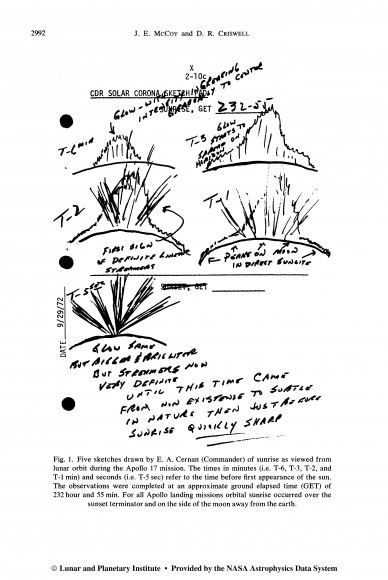Are there Storms on the Moon?
Here on Earth, we’re always concerned with the weather.
“OK Google, am I going to need an umbrella tomorrow?”
[Google] No, rain is not expected tomorrow in Curtney. The forecast is 20 degrees and partly cloudy.
Uh, it’s pronounced “Courtenay”.
Fine, what if I lived on the Moon? OK Google, am I going to need an umbrella tomorrow on the Moon?
[Google] …
Let’s take Google’s silence for uncertainty.
The names of geological features on the Moon sure evoke mental images of weather. There’s the Ocean of Storms, also known as Oceanus Procellarum, or the Ocean of Clouds – aka Mare Nubium. In fact, most of the regions of the Moon are named after oceans. That’s got to count for something, right?

Many of the features of the moon were thought to be oceans. Credit: NASA
They got these names because the early astronomers thought they were seeing actual oceans on the Moon. They imagined vast seas, where heroic 6-legged creepy bug people plied the icy waves seeking fame, fortune and lunar plunder. I don’t know, like gold cheese or something. Seriously, they were making a lot of this stuff up until telescopes were invented.
But when the NASA astronauts finally set foot on the Moon, they knew they wouldn’t need to pack their snorkeling gear because there weren’t any oceans on the Moon, or really any atmosphere. The Moon is almost as dead and lifeless as space itself.
The storms we see battering the astronauts on every Mars science fiction story just can’t happen on the Moon because there’s no air there.
There’s an ongoing lethal radiation solar wind blowing from the Sun and deep space, but nothing that you’d be able to windsurf too.
So why isn’t there an atmosphere on the Moon? It all comes down to gravity. The Moon has about 1% of the mass of the Earth, which means that it doesn’t have enough gravity to hold onto any gas atmosphere. Anything that it did have would have been blown away by the solar wind billions of years ago.
We did a whole episode on what it would take to terraform the Moon, and it turns out you’d need to constantly replenish the atmosphere.
In fact, this is one of the reasons why the Martian atmosphere is so thin. It was probably thicker in the past, but the solar winds stripped off all the lighter atmosphere long ago. Now it’s just 1% the thickness of the Earth’s atmosphere.
Now, I’ve said that the Moon has almost no atmosphere. But almost no means partly yes. There is in fact an incredibly thin atmosphere surrounding the Moon which measures about a hundred trillionth the thickness of the Earth’s atmosphere.
There are a few sources of this atmosphere. First there’s volcanic outgassing that comes from the Moon. this contributes a little helium and radon. Then there’s the constant micrometeorite bombardment that kicks up pulverized lunar regolith.

Lunar sunrise sketches drawn by Commander E. A. Cernan during the Apollo 17 mission. Credit: NASA
But perhaps the strangest atmospheric feature is a storm that does rage across the surface of the Moon right at the terminator, the exact line between the Moon’s day side and its night side. It turns out the day side of the Moon is positively charged, and the night side is negatively charged.
As the terminator moves, the polarity of the dust flips and it drives it sideways. In fact, the astronauts who walked on the Moon actually reported seeing this. They saw bands or twilight rays in the sky around lunar sunrise/sunset.
Without a thick atmosphere, the surface of the Moon just doesn’t have any appreciable weather and definitely doesn’t have storms like we have on Earth. Mark Watney will need some other reason than weather to be stuck behind on the Moon.
The post Are there Storms on the Moon? appeared first on Universe Today.